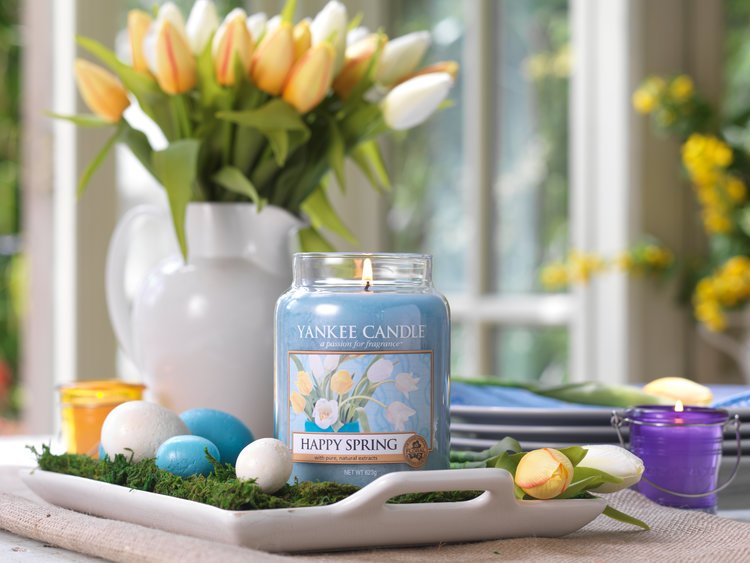Spring into Easter
Easter is nearly upon us and it felt like a long winter wait but Spring is well and truly here! The countryside is bursting with daffodils and awash with lively spring lambs!
Here are some intriguing acts about Easter:
• The name Easter owes its origin from Eastre, the Anglo-Saxon goddess who symbolises hare and egg.
• Easter is the celebration of the resurrection of Christ three days after his death. It is the oldest Christian holiday and the most important day of the church year. However, unlike most days in the Christian calendar, Easter does not have a fixed date.
• Easter doesn’t fall on a fixed date in the normal Gregorian or Julian calendars, which follow the cycle of the sun. Instead is determined by the lunar calendar, which is based on the phases of the moon.
• Easter is scheduled to fall on the first Sunday after the first full moon after the Spring Equinox around April 14. So, in Western Christianity, Easter will always fall between March 22nd and April 25th.
• Even before the birth of Christianity, the egg was seen as a symbol of Spring, a celebration of the rebirth and reinvigoration after the harshness of winter.
• The Mesopotamians - an ancient Christian community living in an area roughly covered today by Iraq, Syria and Kuwait - used to stain eggs red to symbolise the blood of Christ.
• Eggs would then be cracked against one another, leaving just empty shells - a symbol of the empty tomb Jesus left behind. The tradition survives today in the shape of egg rolling, representing the rolling away of the rock from Jesus' tomb.
• Over time, Easter eggs became more and more elaborately decorated, perhaps most famously by Russian jeweller Peter Carl Faberge creator of the priceless Faberge eggs as Easter gifts for Tsars Alexander III and Nicholas II.
• In 2007, a Faberge egg covered in diamonds sold for almost £9 million. This egg is very special because, every hour, a cockerel made of jewels pops up from the top of the egg, flaps its wings four times, nods its head three times and makes a crowing noise!
• The gesture of giving eggs at Easter has been traced back to Egyptians, Persians, Gauls, Greeks and Romans. Back then the egg was a symbol of life. Christians consider Easter eggs to symbolise joy and celebration, new life and resurrection.
• The introduction of chocolate eggs is a relatively new phenomenon, originating in France and Germany in the 19th century. As chocolate production became more sophisticated, the Easter festival, like Christmas, became more marketable. The first chocolate egg in the UK was produced in 1873 by Frys of Bristol.
• Every child in the UK receives an average of 8.8 Easter eggs every year - double their recommended calorie intake for a whole week. When tucking into a chocolate bunny rabbit, 76% of people bite the ears off first.
• The Easter Bunny tradition made its way to the US in the 18th century. It is believed to have originated in Europe where it was actually the Easter Hare. Other Easter traditions include wearing Easter bonnets, making Easter baskets and having Easter egg hunts.
• The white lily, the symbol of the resurrection, is the special Easter flower.
• The Ukrainian traditional act of painting eggs is called Pysanka. The word pysanka comes from the verb pysaty, "to write", as traditionally designs are not painted on, but written with beeswax.
To celebrate Easter and Spring we have a easter themed competition on our site. Just browse our site full of lovely products, if you come across a little white bunny add it your basket along with a purchase and you can win an illustrated magnetic shopping pad. There are 3 bunnies to find, so be quick!
Whilst browsing on our site, may we recommend the Happy Spring Large Jar Candle (Limited Edition). Let the Spring season unfold with Yankee Candle's lovely floral bouquet of wildflowers and white blooms.
We also have some great new products in store they are handcrafted locally and a delight to behold. We have a selection of stunning nature inspired greeting cards and magnetic note pads with matching illustrations. Not only are the magnetic pads practical and useful they are stunningly illustrated. They are created by illustrator Emily Johnson (E J Studios). At The Candle Tree we love to support local artists espcially when their products are so beautifully creative and handcrafted. Emily Johnson has a passion for the countryside which she combines with her love of all things creative to produce wonderful illustrative results. Take a look her website for more information and examples of her great work. Pop down to The Candle Tree and take a look for yourself at our wide range of products, we'd love to see you! Wishing you a lovely Easter!

